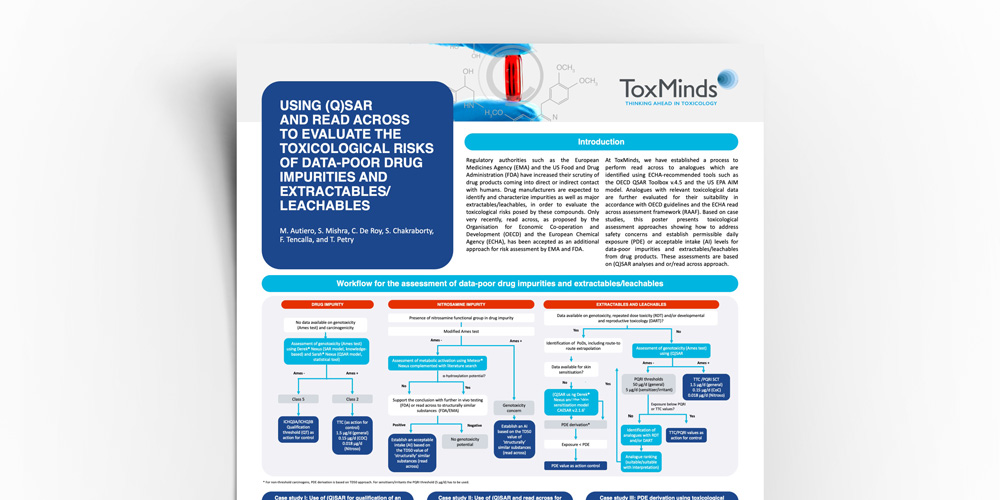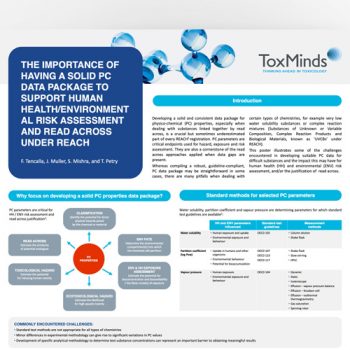Using (Q)SAR and read across to evaluate the toxicological risks of data-poor drug impurities and extractables/leachables

Regulatory authorities such as the European Medicines Agency (EMA) and the US Food and Drug Administration (FDA) have increased their scrutiny of drug products coming into direct or indirect contact with humans. Drug manufacturers are expected to identify and characterize impurities as well as major extractables/leachables, in order to evaluate the toxicological risks posed by these compounds. Only very recently, read across, as proposed by the Organisation for Economic Co-operation and Development (OECD) and the European Chemical Agency (ECHA), has been accepted as an additional approach for risk assessment by EMA and FDA.
At ToxMinds, we have established a process to perform read across to analogues which are identified using ECHA-recommended tools such as the OECD QSAR Toolbox v.4.5 and the US EPA AIM model. Analogues with relevant toxicological data are further evaluated for their suitability in accordance with OECD guidelines and the ECHA read across assessment framework (RAAF). Based on case studies, this poster presents toxicological assessment approaches showing how to address safety concerns and establish permissible daily exposure (PDE) or acceptable intake (AI) levels for data-poor impurities and extractables/leachables from drug products. These assessments are based on (Q)SAR analyses and or/read across approach.



